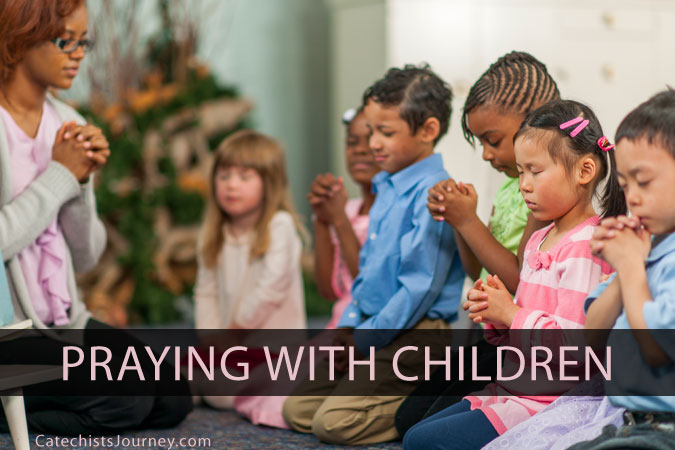
We often hear about the importance of full and active participation in Mass and in our communities. As catechists, that should be our goal for every class. One way I’ve gotten my students involved is through classroom prayer services. In my early days as a catechist, I thought first-graders would be too young for an activity like this. I assumed they wouldn’t be able to sit still long enough, or read well enough, or understand the importance of it.
I was so wrong. My class excels when they’re given the chance to participate in a prayer service, and if a group of six-year-olds can, any group can.
Every Lent, we have a 15-minute prayer service at our last class before we break for Easter. I tell the parents about it a week in advance, so that they can all be present. After a lesson on forgiveness, I explain that our prayer time will be a reconciliation-themed prayer service, and each person gets to play a part. We have three groups: readers, altar preparers, and greeters. Some children are not confident readers, and others want a less visible role.
While my co-catechist and I are working with the other groups, I put the greeters to work. They fold worship aids, tidy the space, arrange chairs, and generally make our space look welcoming. This group takes their job very seriously. Once, when I had my back turned to work with another group, I discovered that they’d found the broom and dustpan and were sweeping the entire room! They love greeting parents. Even the shyest student will hand out a worship aid and say, “Welcome to our class.”
My co-catechist works with the readers to make sure everyone knows all the words and can pronounce them. She coaches them to speak loudly and look up periodically. They deliver the readings in the sweetest way. They’ll even hold up their hands to cue the parents when it’s time to respond, because that’s what they’ve seen done at Mass.
I show the altar prep team how to walk in reverently and set up the prayer table in the front of the room with small purple cloths and a purple runner. (I have several in case there are extra children who need parts.) To start the service, I turn on music, and the children process in with the cloths, flameless candles, a small tabletop crucifix, and a children’s Lectionary for Mass.
Even at this age, they have been paying attention at Mass, so they know how to act in a liturgical setting. The crucifix is about eight inches tall; one year, the student who was the cross-bearer asked me if he could hold it up high, so everyone could see it. The student who was bringing up the Lectionary wanted to hold it up as well. They understood the importance of what they were doing. This is one reason why participation in Mass is so important: they are modeling what they’ve seen.
The feedback from parents is overwhelmingly positive. They are always amazed at how well their children behave. I remind them that this is what happens when you make room for the Holy Spirit.
Our students learn by seeing, but they also learn by doing. We want our children to understand that our faith is about living our lives to allow the love of Christ to show through in all we say and do. Actively participating as a community is a great foundation for that.
In Beyond the Catechist’s Toolbox, Joe Paprocki provides suggestions on how to get catechesis to resemble Mass more than class.





Be the first to comment